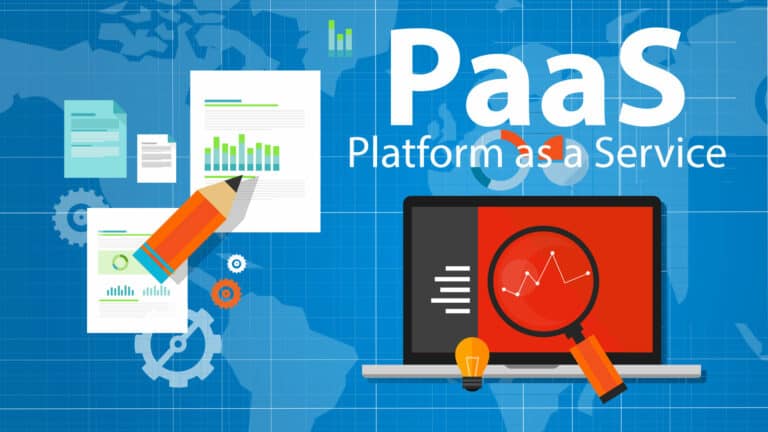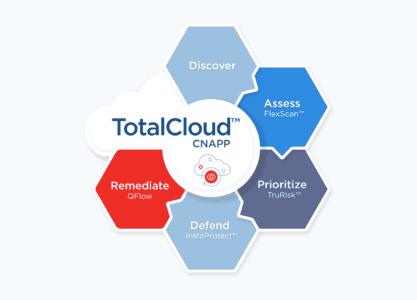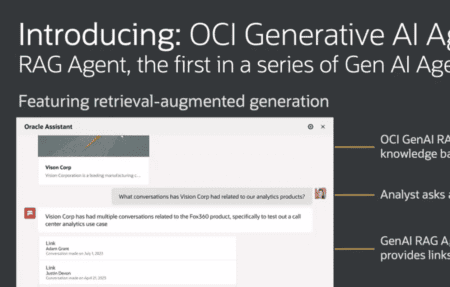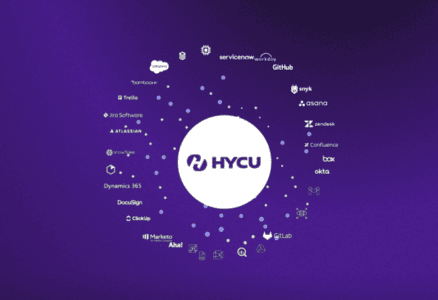Oracle’s cloud story has many facets. The common thread, however, is the glue in between, or platform (PaaS). That, according to Cormac Watters, EVP Applications EMEA at Oracle, is where everything comes together. In other words, “the strength of Oracle is all of it.” What does he mean by this?
Oracle has been telling a rather broad cloud story from the beginning. That makes sense, because it has both IaaS in the form of OCI and a large suite of Fusion enterprise SaaS applications. That gives the company multiple entry points into enterprise cloud offerings. Not only that, it also allows Oracle to emphasize the power of the whole more. The idea is that the total of IaaS and SaaS is more than the sum of its parts. “All of the components are independently competitive. When you put it all together, the power of Oracle is all of Oracle,” in Watters’ words.
Not everyone will agree with the first part of the statement above, and you can certainly argue with this based on available figures. Still, we do understand what he wants to say here. The individual components are mature and can compete on features and services. That Oracle is not among the top three in all segments does not change that. OCI, for example, is a fairly complete cloud infrastructure, where many organizations can find what they need. Recent growth rates show this as well. There is still a lot of room to grow, although it will not be easy to catch up with the big players in all of these areas.
Running on vs running in
Looking at the correlation between (Fusion) Apps and OCI, it is worth noting that Apps (cloud-based applications) was just a bit ahead of OCI. According to Watters, OCI was also designed a little bit with Apps in mind. That may not seem all that interesting, but to him it does matter. As a former CIO, Watters remembers one of his concerns was whether applications run on something or in something.
Whether applications run on something or run in something is a subtle but essential difference, according to Watters. If a SaaS solution is more or less part of an IaaS infrastructure, then that brings the necessary benefits. For this to happen, however, you need some good glue between SaaS and IaaS. That’s a PaaS. According to Watters, that is Oracle’s secret sauce: “our PaaS is super strong.” With that, he does not necessarily want to take anything away from the strength of Oracle’s SaaS solutions, but rather to emphasize that the platform between SaaS and IaaS makes the real difference.
Software updates, customizations
As an example of the importance of the platform for SaaS applications, Watters cites Oracle’s quarterly update cycle. These are necessary because they ensure the innovation of the applications and therefore the customers. The goal is to have all customers on the same release. Oracle appears to achieve that goal. That is, all roughly 14,000 Fusion customers and all roughly 40,000 NetSuite customers are on the same version, according to him.
The update cycle ensures that Oracle itself has to think carefully that they are doing meaningful updates that do not disrupt customer environments. After all, with each release, they have to make sure that everything continues to work properly. That’s not always easy, because sometimes things are left untested that afterwards don’t work as they should. “You can’t make every upgrade huge,” Watters points out. But the updates have to be relevant and add something.
Crucial role for PaaS
An evergreen approach, where everyone is on the same version, sounds good. However, customizations can throw a spanner in the works here when it comes to upgrading the software. Organizations need to reconsider their strategy on that front, Watters points out. This is not to say that customers should not or can no longer build unique extensions or integrations. That is still possible, but it is no longer part of the SaaS solution itself. That’s why the platform (PaaS) is so important: “If you build your own extensions on top of that, the upgrades will go smoothly.”
The omission of customizations does have consequences, of course. “This involves a trade-off,” Watters admits immediately when we comment on this. Organizations will have to say goodbye to certain unique components in their enterprise software. Mind you, many of these customizations or extensions were and are not used in practice and are therefore redundant anyway, according to him. So you might wonder if it’s such a problem. As already mentioned, you can still develop and build the extensions you really need.
When it comes to developing the extensions, Watters advises using Oracle’s low-code development platform to do so. That, of course, is deeply integrated into the Oracle PaaS offering. Whether this is advice that will make customers happy remains to be seen, especially if they are already using another platform such as Mendix or OutSystems. You don’t just switch from those overnight. For customers who are not yet into low-code, this is obviously not an issue. Then it’s more about how feature-rich Oracle’s platform is compared to other platforms.
Thinking in verticals
The idea Watters is trying to convey around updates and customizations is clear. Looking at it from the perspective of the platform, you can combine your own unique features with an up-to-date SaaS solution that is upgraded every three months. He also has a real-life example to show that this approach is possible. KPN has gone from hundreds to three customizations. That means significantly less work around upgrades and, no doubt, less anxiety about doing the upgrades.
The move toward evergreen that Oracle has developed around the enterprise software it provides, combined with the PaaS piece, requires a different way of thinking for Oracle itself. Offering one-size-fits-all software across the board is not very realistic. Hence, Oracle has taken a somewhat more vertical approach. We also wrote about this about a year and a half ago, based on a visit to CloudWorld. In that article, we focused on healthcare, but that approach basically applies to all verticals in which the company operates.
Without an approach by industry, it’s not possible to really get the number of customizations down dramatically. In addition, organizations also want to go “significantly live,” as Watters calls it, in less than a year. That’s really only possible with a vertical approach, i.e., a piece of software focused on a specific sector (healthcare, manufacturing and so on). Then you can properly frame what is needed within that sector and develop an evergreen basis for that. Customers can then extend that basis thanks to the PaaS layer that brings infrastructure and software together.
Everyone on Fusion Apps right now?
The vertical approach puts Oracle’s cloud-based Apps offerings at the fingertips of organizations. However, it does not mean that everyone will simply switch overnight, either from on-prem Oracle solutions or from competitor solutions. “Switching ERP is not something you do lightly,” Watters points out. In addition, many companies still need to get used to the concept of a cloud-based service. He therefore recommends starting at the edges of the organization.
If an organization does a lot of acquisitions, for example, you can start with Fusion EPM, or Enterprise Performance Management. With this, you bring into focus the performance of individual businesses and business units. Over time and if everything works well in the cloud, organizations can decide to move ERP to the cloud as well. Thanks to the vertical approach, this can then also be done relatively quickly.
“Strength of Oracle is all of Oracle, by industry”
It should be clear by now how Watters envisions Oracle’s position when it comes to Fusion Apps. It appears to be a SaaS proposition toward the market, but actually isn’t really. Nor is it an OCI proposition, even though, of course, innovations in OCI allow Oracle to implement innovations in SaaS. It now does so in NetSuite too, by the way. The two ERP solutions (Oracle and NetSuite) now share the planning module. There will be even more shared features now that NetSuite is running fully on OCI. Think ML/AI-related additions to the SaaS solutions.
Oracle’s proposition as a whole is easily summed up by Watters’ quote above, “The strength of Oracle is all of Oracle, by industry.” By this he doesn’t mean so much that everyone should buy everything from Oracle (even though that wouldn’t be unpleasant for Oracle, of course). He is not naive and knows that very few customers have everything from Oracle. This statement is mostly about the power of the PaaS layer that Oracle can provide. It can also offer integrations with other clouds and other applications there. That’s something the company puts a lot of time and effort into.
By offering a strong PaaS layer by industry, Oracle aims to provide a solution for as many organizations as possible, no matter how fragmented the current software stack may be. As always, practice will undoubtedly be a bit more work than theory. However, Oracle has shown in the recent past that it does not take half measures in its cloud strategy (for an example, please see the article we link to at the bottom of the article). We assume this will be the case again here. To be continued, no doubt.
Also read: Microsoft and Oracle extend partnership with Oracle Database@Azure




















